Traditional festival in modern times: The promotion of the culture of Double Seventh Festival
Speaking of famous love story of ancient China, it is impossible to miss out the story of Niulang and Zhinu (The cattle boy and the sewing girl, 牛郎織女) meeting annually in the Chinese lunar calendar the seventh of July in the bridge built by the magpies in the milky way. This is the day for women to pray for good fortune in love and dexterity in doing housework. Sometimes men also pray for a good fortune in their career and their performance in the Keju examination (科舉, imperial examination for selecting officials). Therefore, the Seventh of July in the Chinese lunar calendar is also called Qixi (七夕, the double seventh festival) or Qiqiao Jie (乞巧, pleading dexterity festival). Nowadays, there are many neighbourhoods in Guangdong province and overseas Chinese communities organizing large-scale celebrations of the double-seventh festival.
Zhu Village (珠村) in Guangdong province is recently hailed as “the first village to revive the communal celebration of the double-seventh festival”. Since 2005, Zhu-Chuan has been organizing the communal cultural events for Qixi festival in the seventh of July in the Chinese lunar calendar. There is a motto in Zhu Village: “men go for dragon boats, women go to prepare for Qixi”. The former means the dragon boat competition at Tuen Wu festival, the latter refers to the Double-Seventh festival. The local slang of the Double Seventh festival is Bai Qiniang (擺七娘)(worshipping the Goddess of Qixi), which is also nicknamed as “the beggars’ festival” (as the festival is called Qiqiao Jie, meaning pleading for dexterity). In 2005, the Publicity Department of Guangzhou Tianhe District Division and Guangzhou Tianhe District Government organized the inaugural Guangzhou Qiqiao Cultural Festival (廣洲乞巧文化節) in Zhu Village. Guangzhou Tianhe District Government provided the venue and supporting services, while local business sectors sponsored the event. The festival included the establishment of the Qixi Cultural Square (七夕文化廣場), the launching of conference on Qiqiao culture, the organization of academic seminars on Qixi culture, and publicity events such as Miss Qixi Pageant (乞巧女兒形像創意大賽). Also, road signs of the main road of the Zhu Village were decorated with logos of the Qiqiao Cultural Festival. The collaboration among the government, private business sector and mass media contributes to the promotion and success of the Qiqiao Cultural Festival. In the fourth Qiqiao Cultural Festival in 2008, the Zhu Village organized the public ritual of “Bai Qiniang” (擺七娘Worshipping the Qixi Goddess), with women as the major participants of the event. As early as in 2005, before the launching of the inaugural Qiqiao Cultural Festival, Zhu Village already organized a ritual for Bai Qiniang that involved 130 women of all ages. In 2008, the main venue of Qiqiao cultural festival moved to Grandview Mall (正佳廣場) in Central Tian-He district. The rituals of Bai Qiniang included a section of needle-offering (乞巧放針), in which the female participants prayed to the Qixi Goddess and put the needles on the river. If the needles float on the water, this was a sign that Qixi Goddess promised the prayer to offer them dexterity in sewing and knitting. Furthermore, there are various crafts about Qixi festival. In the Qiqiao Cultural Festival 2007, the organizing committee established “The Milky Way” (Qixi road) and displayed different lanterns decorated with Qixi related figures and pictures. There were musical performances in front of the public hall of Zhu Village with a backing band of cymbals, drums, Er-Hu (二胡) and Chinese Dulcimer (Yang-Qin 揚琴). The repertoire of the performance included classics such as Meeting in the milky way (七夕銀河會) and At the temple of longevity in the Double Seventh (七月七日長生殿), Apart from classics, the performance also included the covers of Kunqu (崑曲, the Opera from Suzhou area) An Ingot of Gold (一錠金) and an original song Qiqiao in the Zhu Village (乞巧風情滿珠村). The song was performed by singers with Falsetto Register (Zihou 子喉) and a guest female singer from Qi-shan village (吉山村) to mimic male voice (Pinghou 平喉). The lyrics not only included the contents of praying for dexterity and the legend of Qixi (“Goddess of Qixi meeting the cattle boy in the milky way”, 七夕仙姬相約銀河, 會牛郎), but also “Zhu Villagers’ pledge to be the frontier of promoting traditional culture” (弘揚民俗文化,珠村兒女勇當先,勇當先) and the goodwill from people, “Pray to the Qixi Goddess, pray for good weather, pray for a peaceful country, pray for longevity of its people. Those ladies with inner beauties pray to Qixi Goddess and pray for good fortunes in love. People are dancing happily with hopes for harmony under the sun”. (拜天仙,祈願風調雨順、國泰民安、人康健。擺七娘,展示心靈美麗,希冀幸福姻緣。歌舞升平人所願,和諧同沐艷陽天). This indicates that the Qixi festival has been extended from personal prayers for dexterity and fortune in love to a higher level of praying for development of traditional culture, peace of the country and its people.
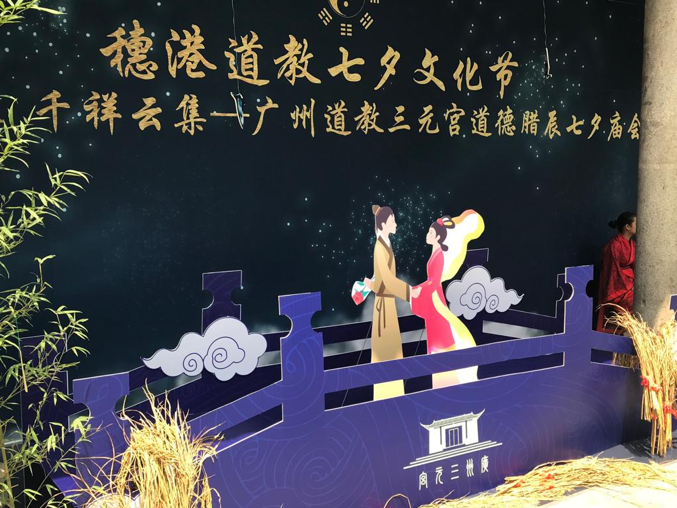
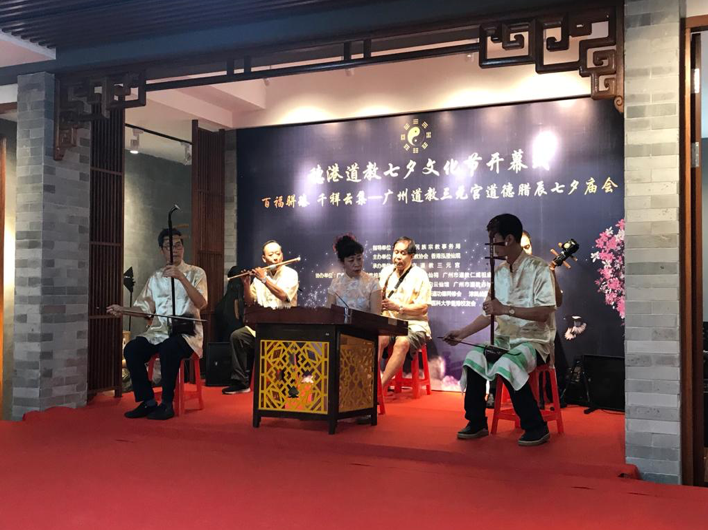
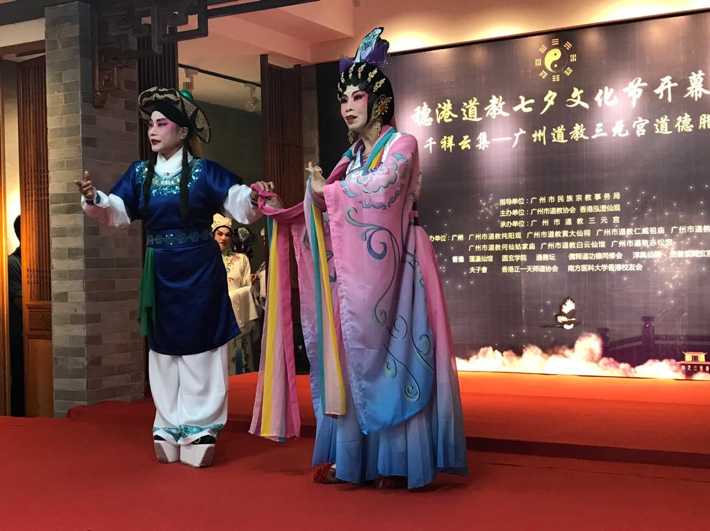
Opera show at the Qixi Cultural Festival
In Southeast Asia, those who celebrate the Qixi festival are mainly descendants of those who migrate to this area in 1920s. In order to adjust the gender ratio of its inhabitants and cope with economic downturns, the Government of British Straits Settlement set up an ordinance in 1928 to restrict male immigrants from entering the colony. Therefore, a large influx of female immigrants from poor rural areas in China migrated to Singapore to try their luck. These include the “red scarfs” (紅頭巾) who came from Guangdong Shan-shui county (三水) and “the four counties” including Taishan (台山), Kaiping (開平), Enping (恩平) and Xinhui (新會) who were mainly construction workers; and Majie (媽姐) from Shunde (順德) who took the no-marriage oath (自梳女) and worked mainly as houseworkers or workers for the brothels. After they arrived at Singapore, those who came from the same hometown rented a room together, resting on the floor or on the bed during the rest time. They would organize their Qixi group with their roommates or housemates. These groups usually comprised around ten people, but sometimes a big group would have several tens of members. They contributed one dollar annual membership fee for the organization of celebrating of Qixi. Sometimes, the friends or relatives of the group members offered their home as the venue for celebration.
There were large-scale celebrations organized by various Chinese Expatriate Associations as well. The most popular one was the grand celebration organized by Shun Tak Sha Kong Mei Sar Khai Wong Clan Association (沙溪黃族同鄕會) located at Keong Saik Road (恭錫路). Apart from joining those grand ceremonies organized by those Associations, some women chose to celebrate Qixi at home. Worshippers provided the offerings of gourds, fruits, cakes and biscuits and prayed for wellness in the family. The Chinese community in the Singapore start the celebration of Qixi on the sixth of July in the Lunar Calendar. They begin with worshipping rituals, which were completed on the dawn of the seventh of July. The worshipping activities are not restricted to the day of double seventh. Those small Qixi groups prepare for the festival as early as in late June. They prepare and exhibit their offerings and visit others’ offerings. The actual worshipping begins from the first of July until the seventh of July.
In Singapore, the Chinese communities including the Qixi groups prepare the offerings in the following manner. They place fruits, pastries, flowers, and paper money and incents onto a big table. The highlights of the display are the clothes for the Qixi Goddess (七姐衣) and the bowl for the Qixi Goddess (七姐盆). The clothes for the Qixi Goddess must be in seven sets as it is believed that the Qixi Goddess had seven sisters. The clothes are usually made of paper, but the clothes of the affluent groups, which are made of real cloth, are colorful and in human-size. This is different from Fujian-styled clothes for the Qixi Goddess, which are only made of paper and much smaller in size. Aside from clothing, the offerings must include shoes. Instead of being made of paper, these shoes are handcrafted three-to-four-inch shoes of made of velvet with two phoenix embroideries on the toe caps. The shoes were disproportional with the clothes, which may be due to the tradition of foot binding in ancient China. The group prepare a suit for the cattle boy in the offering pack.
The Bowl for the Qixi Goddess is another important offering. The paper-made women beauty products such as mirrors, combs, water powder, silk handkerchiefs, toothbrushes, and cosmetics are stuck onto the basin. The basin, with its size ranging from half-yard (半碼, 46 cm) to two yards (176cm), is hung up for display. The basin will be burnt for offering to the Qixi Goddess after the worshipping rituals.
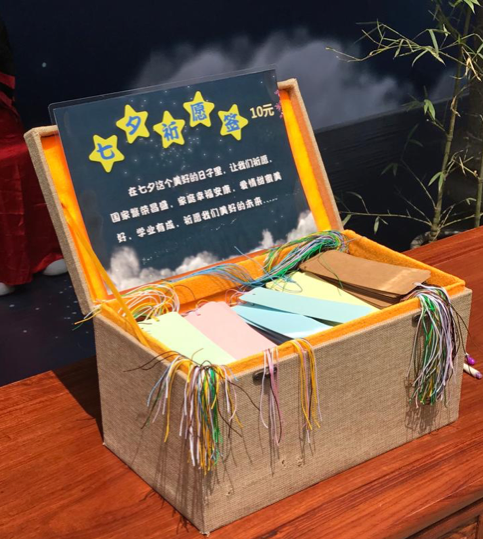
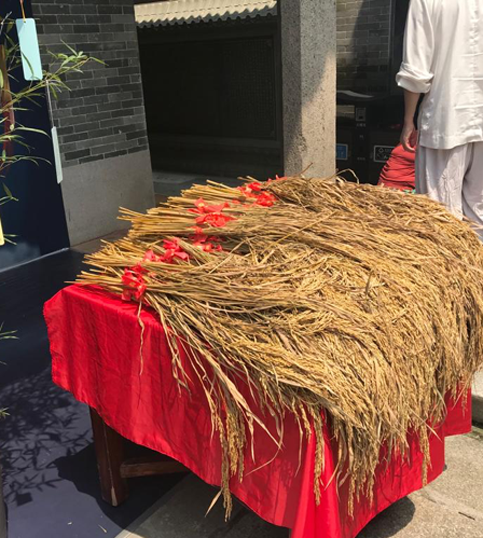
Another offering is the Sprout of Qixi (七姐秧). This is a special sprout which must be packed in a small vase to grow upright. There are no specific requirements in terms of quantity and types on other offerings like fruit, gourds, pastries, flowers, needles and threads, paper money, and incense, but all depend on worshippers’ own choice. Some affluent groups even contribute a roasted pig as the offering. This is not the usual case in traditional Qixi celebration in China. This may be a fusion with other practices for other celebrations like Mid-July Festival (中元節) in Singapore. After the worship, members can share the offerings, and taste their portion of the roasted pig at home.
All articles/videos are prohibited from reproducing without the permission of the copyright holder.
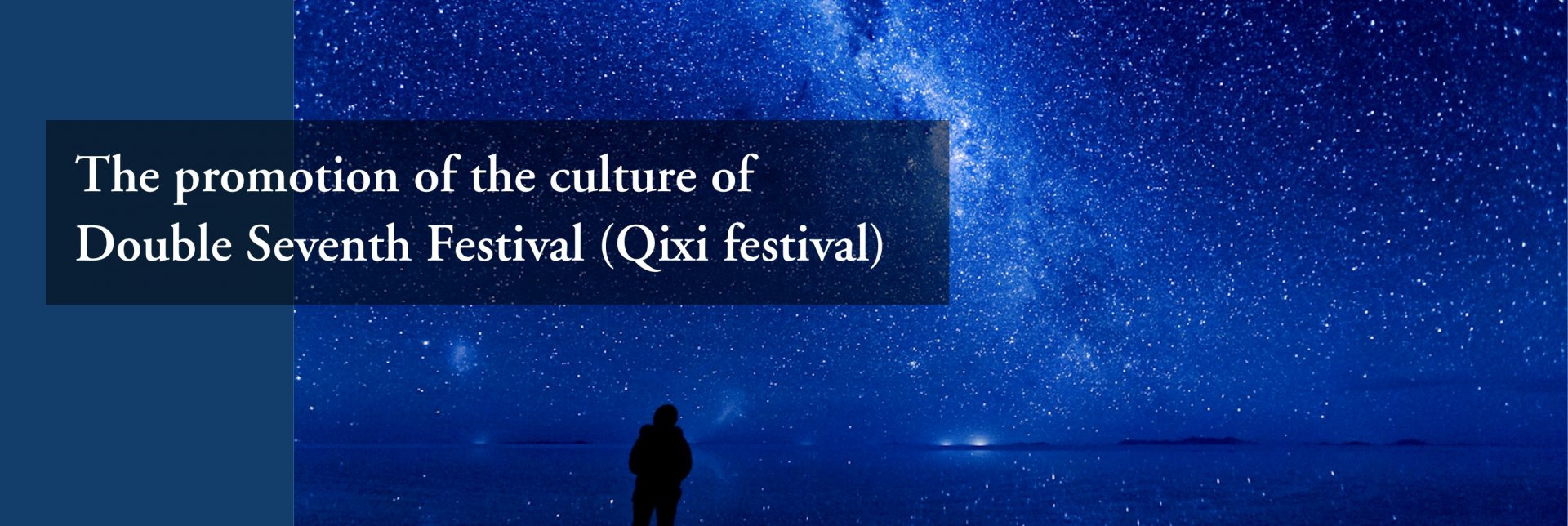



Welcome to leave a message:
Please Sign In/Sign Up as a member and leave a message